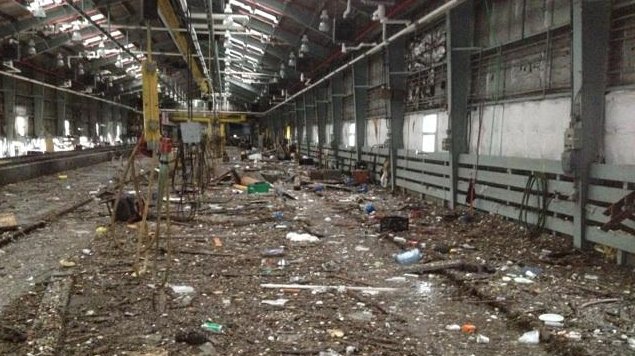This photo released by the MTA on October 30, 2012 shows damage done to Staten Island Railway's Clifton Shop in the aftermath of Hurricane Sandy. The super storm made landfall last night in New Jersey and has claimed at least 16 lives in the United States, and has caused massive flooding across much of the eastern seaboard. UPI/MTA |
License Photo
NEW YORK, Nov. 2 (UPI) -- Development on New York's Staten Island made the borough more vulnerable to the wrath of Hurricane Sandy, an educator said.
Nineteen of the city's 40 deaths attributed to the storm were on Staten Island, where roads, houses and bridges took away natural elements that would have helped absorb some of the shock when Sandy made landfall Monday, The New York Times reported.
William J. Fritz, interim president of CUNY College of Staten Island, said the borough no longer had what he called "sponges that absorb the energy of hurricanes."
"Jamaica Bay is a natural sponge with dunes and marshes that can do that," Fritz told the Times. "Barrier islands in North Carolina did that. What have we done on Staten Island? We've hardscaped our sponge. We've made roads and parking lots and houses and paved over the sponge. We've created an urban area, and you no longer have a sponge."
Fritz said the development was "one of the reasons we have that much property destruction, and I think some of the deaths."
Among the 19 dead were two neighbors who drowned in their homes, the Times said, and two boys who were wrenched from their mother's grasp by a wave as they tried to flee.
In a wooded lot, rescuers found the bodies of an 89-year-old man and his 66-year-old wife on Thursday -- the couple lived less than 500 yards away from where the bodies were found, the Times said.
Dr. Alan Benimoff, a geology lecturer at CUNY-Staten Island, said Staten Island was geographically in the wrong place when Sandy hit the Times said.
"The water didn't have anywhere else to go," he said.
Some residents of Staten Island were upset with what they perceived as a slow effort to get help into the borough, the Staten Island Advance reported.
Resident Donna Solli said she's happy that relief arrived but "I wish they had been here yesterday."
"This is a start," she said.















